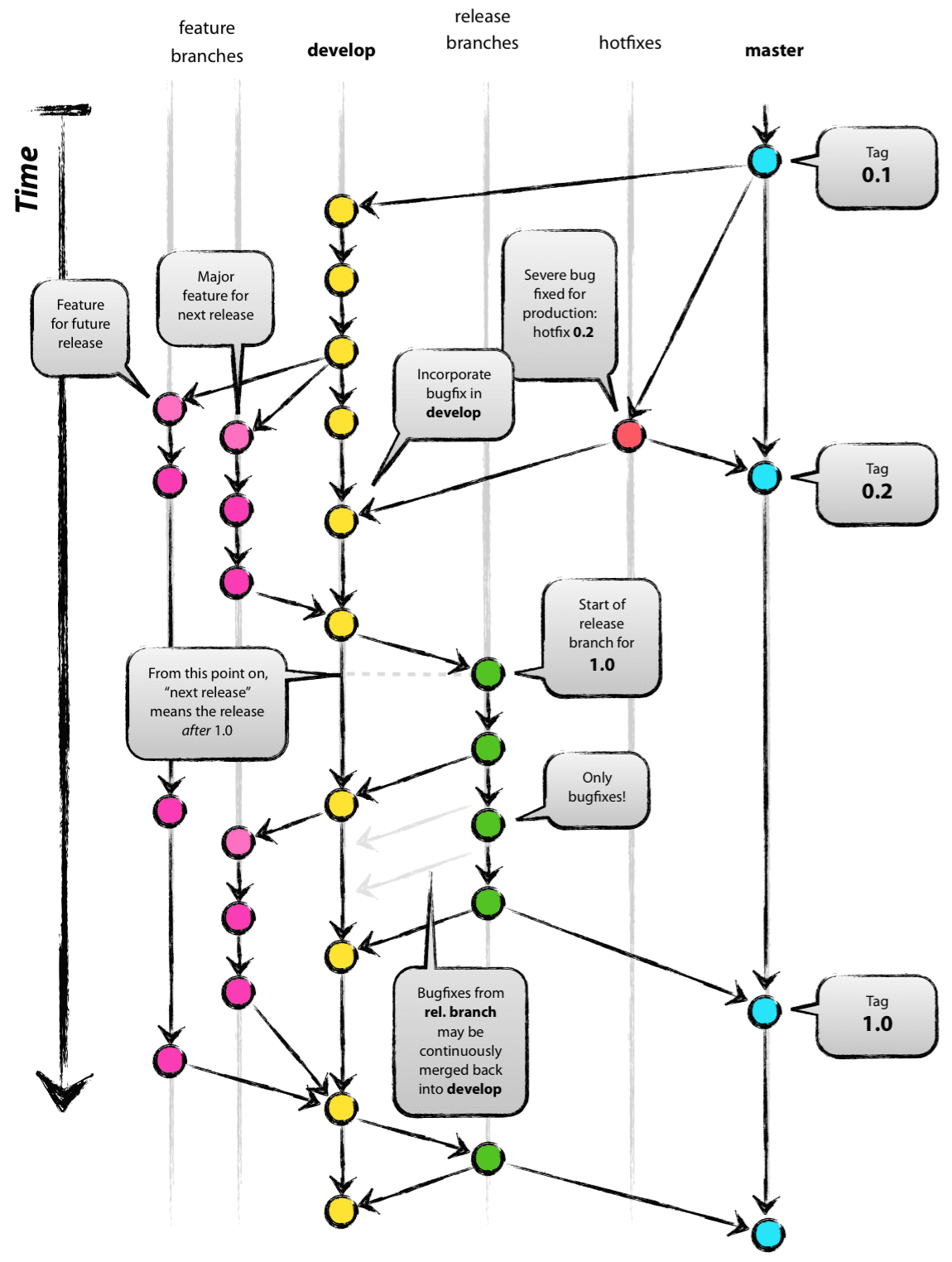GitFlow is a natural fit for Episerver DXC
In this blog, I'll explain a little about GitFlow and why it aligns so well with Episerver DXC development.
What is GitFlow?
If you're not familiar with GitFlow, it's just another branching and merging strategy. It was made popular by Vincent Driessen at nvie and has since been widely adopted by the development community.
It's also built into the most popular Git Clients including SourceTree and GitKraken and is available via commands in Git console.
What I like most about GitFlow, is not the merging strategy itself, but its things that having a standard strategy offers;
- We can more easily collaborate with external developers and Agencies. We can simply by say "we use GitFlow" and they'll know what we mean.
- Onboarding Developers is faster, there are a lot of good learning resources around.
GitFlow merging strategy (in a nutshell)
There are two main branches in GitFlow;
- master - the code you have or are going to release.
- develop branch - the latest development, changes for the next release.
Besides the main branches, we also have;
- feature branches - this is where you actually do your development and commits.
- release branches - a branch to get code ready to release to master.
- hotfixes - for emergency fixes for master branch to be immediately released.

Why does this work well with Episerver DXC?
Because of Episerver DXC's linear deployment path, code must be deployed from Integration > Preproduction > Production.
This means we can think of our Master branch as the code ready to be deployed to Integration.
Deployments above Integration are managed via the Paas Portal or via Episerver Support.
If you also want to have an internal CI/CR (build and release) environment for internal QA, you can run it off the Develop branch
This all means we can use the standard implementation of GitFlow.
Wrapping it up
I'm not saying GitFlow is perfect, but it is a decent merging strategy. It can become complicated when you aren't certain about the order that Features will be released and I have some very large scale projects that GitFlow struggles to handle so we have a customized strategy.
But generally speaking, for Episerver DXC projects where the deployment chain is linear, I've found it's a great fit.
This might change in the future if we are allowed to use our own DevOps tools to deploy directly to Preproduction (or even Production) which is something I've heard is on the technical roadmap.
Resources
- GitFlow by Vincent Driessen
https://nvie.com/posts/a-successful-git-branching-model/ - GitFlow Atlassian
https://www.atlassian.com/git/tutorials/comparing-workflows/gitflow-workflow

Comments